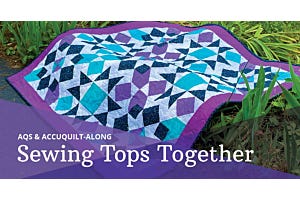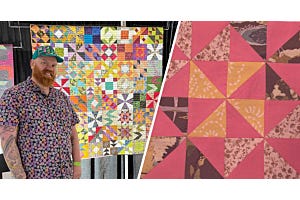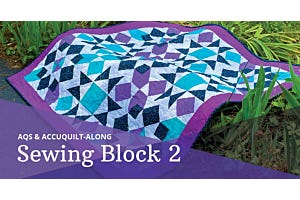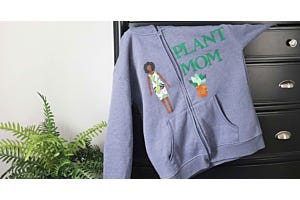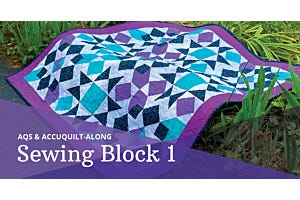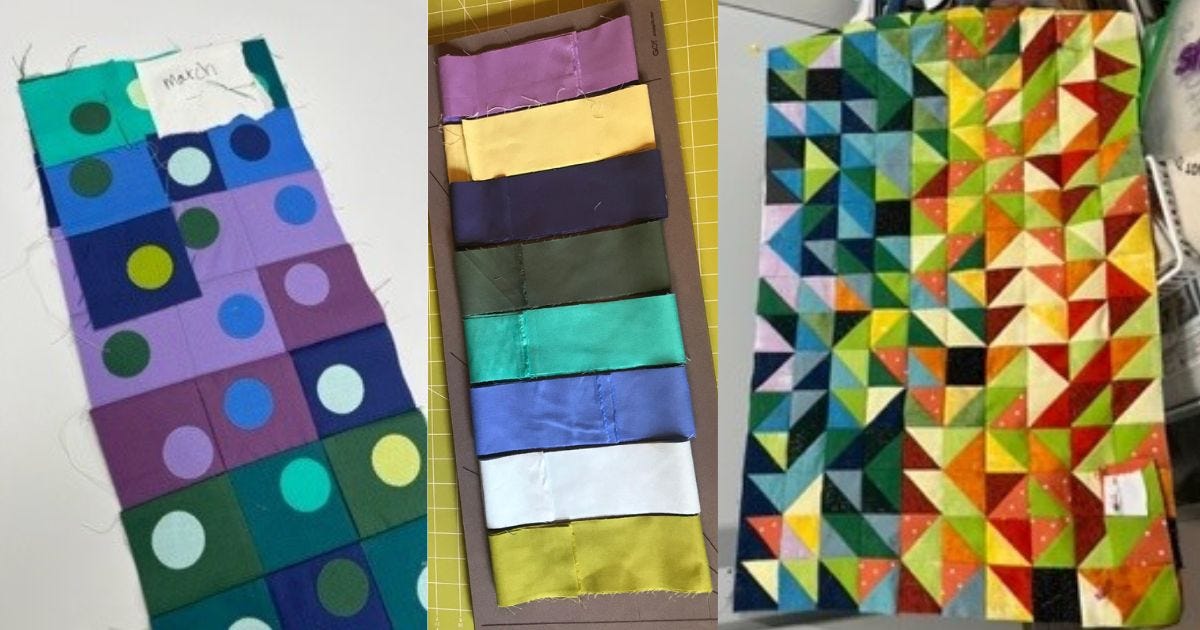
Have you heard about temperature quilts? They’re a “hot” trend in quilting, knitting, and crochet that’s really taken off over the last few years. QuiltCon 2022 featured an exhibit of temperature quilts earlier this year, inspiring me to learn more about these quilts and make one of my own.
Temperature Quilts Background
Temperature quilts use colors to indicate temperatures during a set time frame, often one year. Some will represent both the high and low temperatures from each day while others will use daily average temperatures. What really captivated me is the freedom that each quilter has with design – there are so many different looks that this project can take on, all while representing the same basic concept!
When QuiltCon announced this exhibit, quilters around the globe started looking into this fun and interesting type of quilt. Here are some of the quilts displayed at the show, representing a diversity of climates, color palettes, and styles:
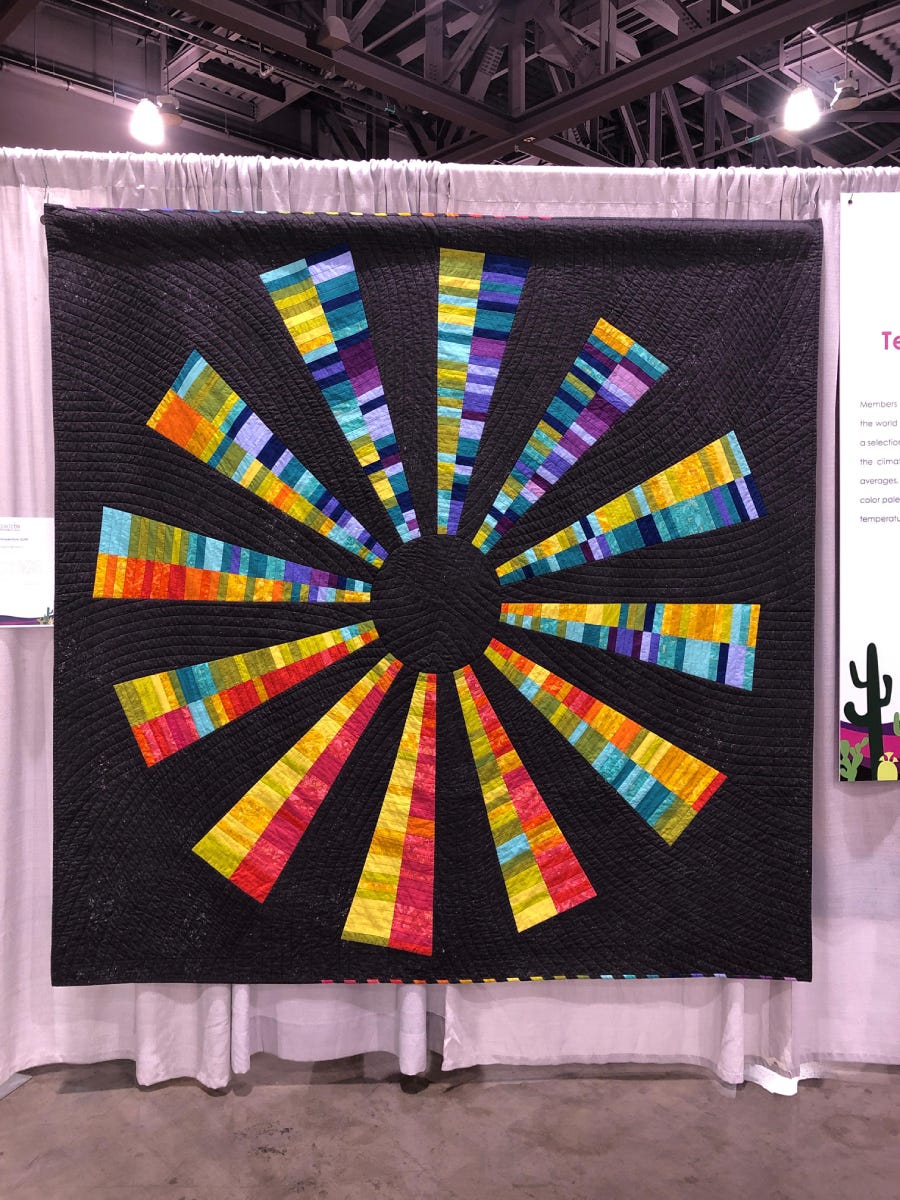
2020 Temperature Quilt, Denver, CO by Sarah Schreiner
Sarah Schreiner, a scientist as well as a quilter, said she “could not pass up the idea of representing data on a quilt.” Each wedge on this stunning quilt represents one month, with both high and low strips. Here, purple represents the coldest temperature, and pink the hottest, in five degree increments. I love how the colors pop against the black background.

The Rise and Fall, Gilbert AZ by Tavia Olive
Tavia Olive revealed that she struggled with color selection since her area has a limited temperature range. Then, her husband suggested removing color from the equation, which made the whole concept come together. While the arrows originally represented the rise and fall of temperatures, as 2020 moved along and the pandemic affected her life, they took on additional meaning. She used blue strips for rain days and red for the hottest day of the year – 117 degrees!
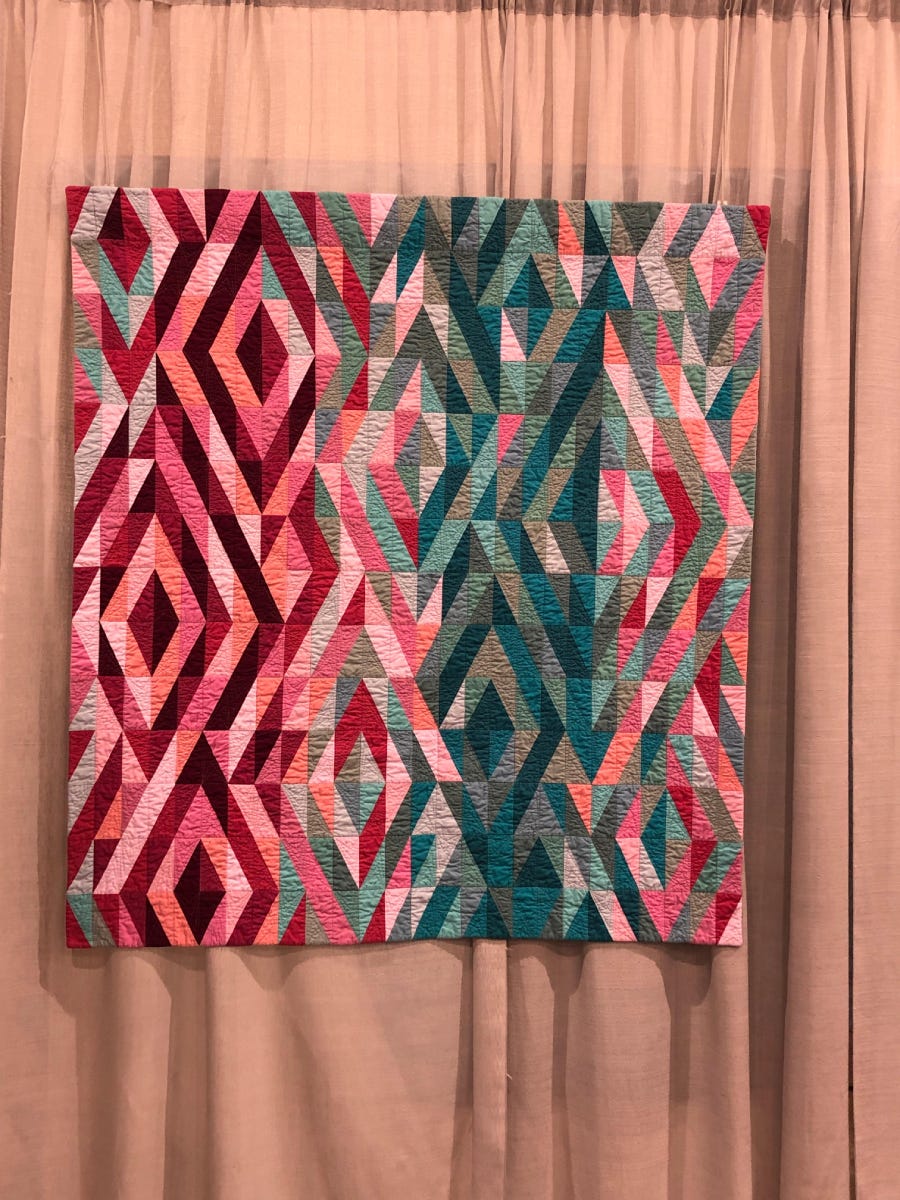
Path to Sixty, Madison, AL by Diane Lyles
This quilt is a visual representation of a year leading to the Diane Lyles’s 60th birthday. She included some great details on the back of her quilt as well by hand embroidering the temperature scale on multiple blocks appliqued to the back. She also formed the number 60 with half rectangle triangles and appliqued that on the back as the final block.
If this look inspires you, each GO! Qube Companion Set-Angles has a half rectangle die for you.

In Full Color 2019, Elkhorn, NE by Kelly Lautenbach
Kelly Lautenbach wrote that she was inspired to make a long-term project when she discovered temperature quilts. She didn’t want her project to be “too bright,” so she used a variety of shot cottons for the highs and Essex linens for the lows with one block per month. This pattern is "Juicy Goosey" by JeliQuilt.
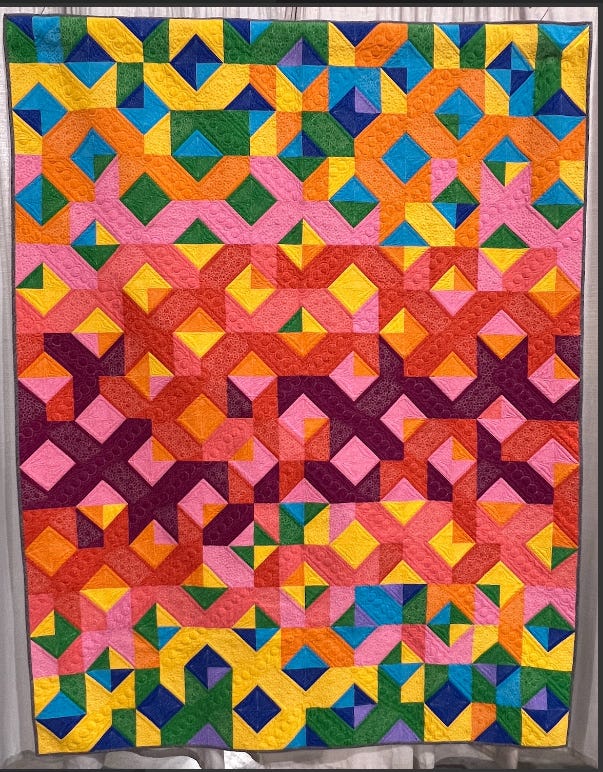
Albuquerqe 2020, Albuqerque, NM by Ann Petersen
Ann used a bright color palette to reflect the colors around her with her temperature quilt. She used rectangles for high temps, with a half square triangle across one end representing the low. By changing the direction of her pieces, she created a diamond-like design. Ann’s look could also be created using any GO! Qube Mix & Match Block with the matching GO! Qube Companion-Corners. She joined AccuQuilt Cutting Expert Pam Heller and me on our A Hot New Trend in Quilting show to discuss how she made her quilt, and what she learned along the way! If you missed the show, be sure to check the replay below.
A Hot Challenge for Cool Quilters
You can start to see why Pam and I were inspired to create our own temperature quilts! We researched different color palettes and roughly based ours on one by Marie Bostwick, set a starting date of March 1, 2022, and dove right in! Unlike Ann, we avoided all the math by not calculating how much fabric we needed, mostly working with fat quarters. So far, so good - we haven’t run out of any color quite yet!
Pam's Progress

Pam’s Quilt
Pam decided to use solid fabrics with squares for her low temperatures and fuse circles on them with the high temperature for each day. She jumped in with wanting to cut as many squares as possible, so she used her handy GO! Strip Cutter-2 1/2” (2" Finished) Die.
-Die-to-Cut-Squares.jpg)
If you’ve never used your strip dies to cut squares, here’s a video to show you how:
To mark the end of each month, Pam’s using a solid square with no dot, but she’s holding off on putting her month’s together until the end.

To store her pieces, Pam went with our favorite high-tech method: zippy plastic bags! To create her high temperature circles, she ironed fusible to the back of her colors and cut 1 1/4” circles from the GO! Circle-1/2”, 3/4”, 1” and 1 1/4” Die.
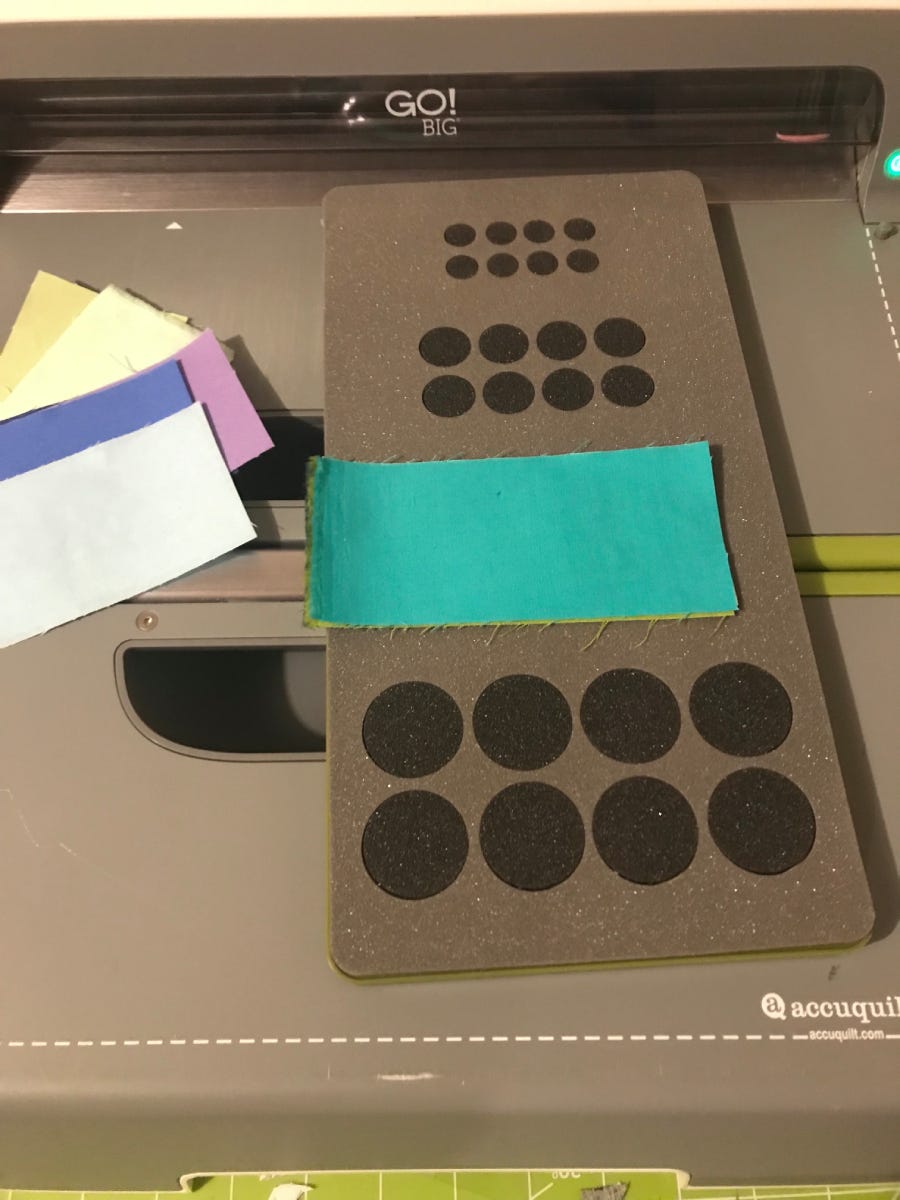
Once her project top is finished, she plans to quilt over the top of those little circles to secure them.
Erica's Evolving Temperature Quilt
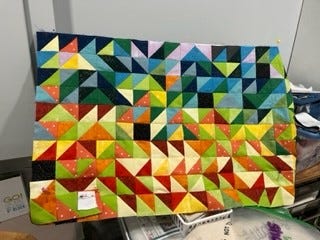
Erica’s Quilt
I love working with smaller shapes, so I started with my GO! Qube Mix & Match 4” Block and chose Shape 3, the larger half square triangle that finishes at 2”. My fabric selections are mostly Grunge by Basic Grey and Ruby Star Society Speckled, both by Moda, with a few other prints tossed in for good measure! Hopefully, I’ll be able to find more fabric if I need it – fingers crossed!
To keep life - and the design - interesting, I’ve been rotating the blocks randomly and loving all the secondary designs!
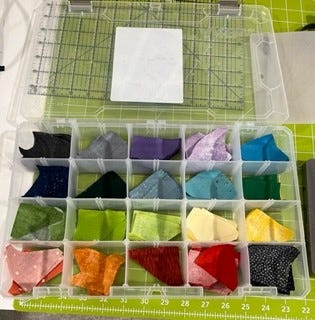
With just the one shape, I was able to perfectly fit my triangles in an Art Bin tote. I’ve been pinning my quilt in progress to a foam core board, but it’s recently gotten too big! My plan was to have the project sized to work as a wall hanging in my office.
Are You Ready?
Are you inspired and ready to start a temperature quilt of your own? Here’s some other ideas for dies you might want to use:
- GO! Tumbler-3 1/2” (3” Finished) Die
- GO! English Paper Piecing Hexagon-1” Finished Sides
- GO! Strip Cutter-1 1/2" (1” Finished) 5 Strips Die
So, if you’re ready to jump in and join our little temperature quilt stitch along, just pick a design, grab some fabric and jump right in! We promise to post updates on our progress and hope you post yours as well. Be sure to tag us @AccuQuilt and use the hashtag #AQtemp – because temperature quilts are a “hot” trend that’s even “cooler” to make with AccuQuilt!


